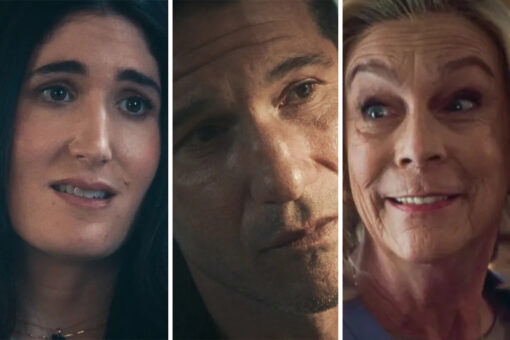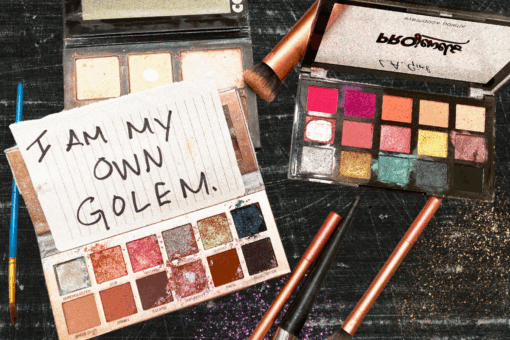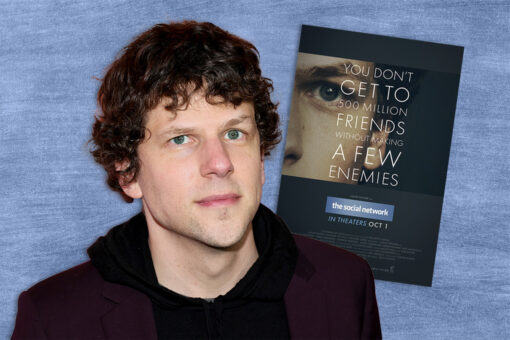Three weeks ago, I sat inside my college’s Senate room as we discussed how to handle the act of anti-Semitism that plagued our community: a swastika was carved into the wall of an apartment building on campus. I sat and listened to Jewish members of the community speak about how angry, scared, and disheartened they were by this hateful act. After hearing around 10 different students take the mic and address the student body, advocating for legislation and change, I nervously raised my hand to speak. I was shy, unprepared, and I hadn’t been in a room of that many Jewish people since my bat mitzvah.
Embracing my Jewish identity has never been easy for me, especially growing up as a Jewish Asian American in the small, predominantly Christian community of Evergreen, Colorado. All I wanted was to fit in, but I had two identities that made me different from my peers. My parents, proud Jews that were raised in New York, were adamant, though, about my presence at our synagogue. Upon their request and sometimes demand, I attended services, skipped school for Jewish holidays (more so when I was younger), learned to read Hebrew, and went to Hebrew school every week until my bat mitzvah at age 13.
Still, after all was said and done, I didn’t feel very connected with my Jewish identity, so I started to disassociate with it. In high school, it meant attending church with a close friend instead of synagogue. I had convinced myself that being Jewish “wasn’t my thing.”
The summer before my freshman year of college, I met someone that unknowingly rekindled what I thought was my dead Jewish identity: my soon-to-be roommate, Leora. We connected online; she was a sweet, bubbly, and proud Jewish girl residing in Superior, Colorado. Meeting and getting to know Leora demystified what being a young Jewish woman could look like.
Leora was the first Jewish person my age who I had met who was completely open and proud of her Jewish identity. In my community, the majority of young people attended services and school because their parents pushed them to, but Leora did so because she genuinely wanted to. As the school year went on, we grew closer and I noticed and began to admire her relationship with her Jewish identity. I also loved how connected her family was, and it became clear that part of that closeness was due to Judaism. It was unexpectedly wonderful to celebrate Hanukkah with Leora. Unlike my other friends, she knew all of the prayers and the significance of the holiday. For the first time since my bat mitzvah, I was questioning what I wanted my Jewish identity to mean to me.
I didn’t grow up proud to be Jewish like Leora, and simply meeting her didn’t make me want to reconnect with my lost Jewish identity; it was honestly intimidating at first. It made me feel even more like a “fake” Jew than I did with my Christian friends. Nonetheless, Leora and I were fast friends, and so I began attending a few events to support her, most notably the Senate meeting. In doing so, many Jewish students reached out to me, inviting me to join their community and reassuring me that there isn’t just one way to be Jewish.
It was there in that Senate meeting, sitting in a room of community members that either were Jewish or were supportive of Jewish people, that I realized it was time to embrace my own identity as a member of the community.
That’s not to say that I had everything figured out after leaving the meeting that day. Choosing to embrace a part of yourself that you’ve hidden isn’t a one-time decision. Every day presents the choice of working towards doing so or shying away out of habit or fear. Since deciding to embrace my identity, I’ve made both choices that work towards embracing and ones that work against it. But I’m working on growth regarding my identity; I’m working to understand this piece of me.
There are many reasons to disassociate with an identity, such as indifference, personal development, and lifestyle changes; mine was fear. It started as the fear of not fitting in, then grew to feeling that I wasn’t “Jewish enough.” And now, it is the fear of being targeted and, at the most extreme of my worries, being killed.
But in the past couple years, I’ve truly worked to embrace the advice of “may your choices reflect your hopes, not your fears.” For me, I feel that, now more than ever, it is my responsibility to stand by my Jewish community. I thought it was enough to just sit silently back in support, but it isn’t anymore. Not when anti-Semitic attacks are on the rise, trying to scare Jewish people into silence and shut down their faith and identities. This is their goal, and it’s important not to let them achieve it by, at the very least, acknowledging your identity and working to develop it.
My Jewish identity doesn’t look the same as Leora’s, and probably never will, and that’s okay. Embracing your identity can look like so many things. It can mean educating yourself on Jewish practices, taking up a mitzvah project, or lighting a yahrzeit candle for a friend or family member who has passed. For me right now, it means attending more community-held events (particularly the recent sukkah building), learning more about kosher laws, and taking small steps to broaden my advocacy to include Jews.
I don’t have my identity figured out, and I accept that. Embracing your Jewish identity doesn’t happen overnight; it requires taking small steps and exploring pieces of the culture so that you can tailor your identity to what works for you.
For those who are struggling to understand and accept their Jewish identities, and particularly other young closeted Jews like me: You aren’t alone. There are many young Jewish people, even if you don’t see any in your community, and many are working to understand their own identity for various reasons. I am working to do so because I hope to connect with my parents on a new level and work towards defining what being Jewish means to me. And because I refuse to let the anti-Semites win.
Header image by Patricia Boyce / EyeEm / Getty Images.



